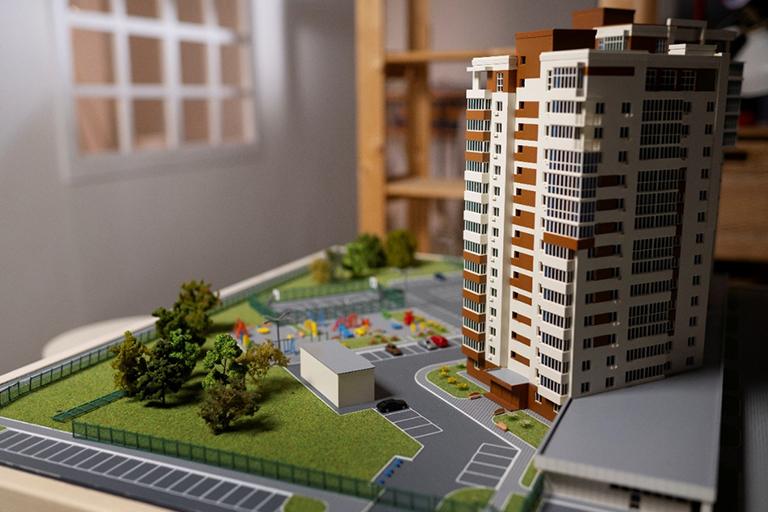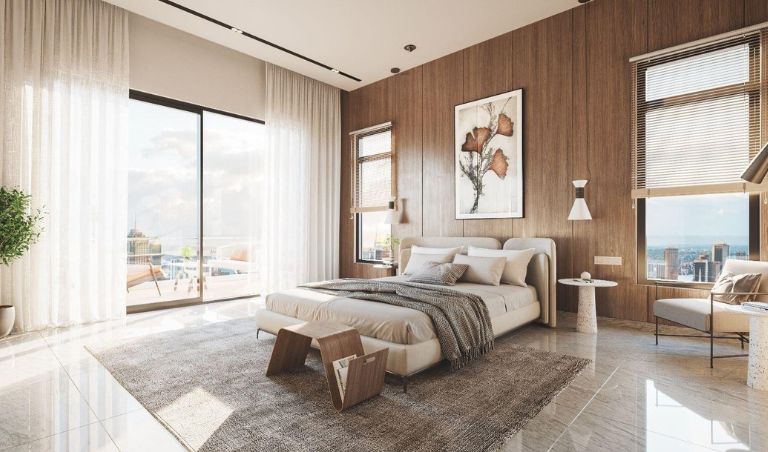
Before purchasing a home, it’s important to understand the significance of a building completion certificate, which is essential for legal possession and utility connections. Having a clear understanding of measurement terminologies is crucial for home buyers to make informed decisions and avoid confusion during the property buying process.
In the realm of real estate, understanding the nuances of measurement terminologies is paramount for prospective home buyers. Two such terms that often cause confusion are Carpet Area and Super Built-Up Area. In this comprehensive guide, we will delve into the intricacies of these measurement terminologies, elucidating their definitions, calculation methods, and relevance in the context of real estate investments.
Introduction to Carpet Area & Super Built-Up Area:

Before delving into the specifics, let’s first understand the basic definitions of Carpet Area and Super Built-Up Area. These measurement terms are especially relevant in a housing complex, where multiple units and shared amenities require clear area definitions.
What is Built-Up Area?
Built-up area is a crucial measurement term in real estate that gives buyers a more comprehensive understanding of the total space they will occupy in a property. Unlike carpet area, which only includes the actual usable space inside the apartment, the built-up area encompasses the carpet area plus the area occupied by internal walls, external walls, and other structural elements such as columns and balconies. This means the built up area accounts for the wall thickness and any space taken up by structural features within the unit.
For homebuyers, knowing the built up area is important because it reflects the total space occupied by the property, not just the space you can use for living. While the built up area is always larger than the carpet area, it still does not include common areas like staircases or lift lobbies. By understanding the difference between carpet area and built up area, buyers can better assess how much space is actually available for use versus how much is taken up by internal walls, external walls, and other structural elements. This clarity helps in making informed decisions about the total space and area occupied in a new home.
Carpet Area

Carpet Area refers to the actual usable area within the inner walls of an apartment, excluding common spaces such as staircases, corridors, and lobby areas. Carpet area represents the actual living space and actual space available to residents, where one can lay a carpet from wall to wall, thus the name “Carpet Area.” The carpet area includes all the rooms within the apartment, such as bedrooms, living room, kitchen, and bathrooms, along with the thickness of internal partition walls. A carpet area is the net usable floor space within the inner walls of a property, excluding common areas such as staircases, lobbies, and lifts. The calculation of carpet area focuses on the usable floor space inside the inner walls, ensuring you know the true area available for daily use. To calculate carpet area, one must measure the actual space inside the inner walls, excluding common areas. It is the actual area where you can spread out your carpet and utilize it for living or other purposes. Carpet area holds significant importance in real estate transactions. It directly affects the pricing of a property and the overall comfort it offers to the occupants. Prospective buyers often prioritize properties with larger carpet areas as it translates to more liveable and actual living space.
Super Built-Up Area:

On the other hand, Super Built-Up Area encompasses not only the Carpet Area but also the proportionate share of common area, common facilities, constructed spaces, and areas occupied by amenities such as lift lobby, swimming pool, sports facilities, office space, corridors, lifts, staircases, and clubhouses. It includes the entire area covered by the apartment, including walls and balconies, and specifically includes the carpet area as well as additional constructed spaces.
Super built up areas in a housing society or housing complex may also include exclusive balcony, exclusive balconies, exclusive open terrace area, and veranda area, depending on the property.
Note that certain areas, such as inaccessible garden areas, water tanks, and services shafts, are typically excluded from the super built-up area calculation.
The concept of super built-up area is commonly used in multi-story residential buildings and commercial complexes. Builders and developers often use super built-up area to calculate the cost of a property, including the cost of common amenities and facilities. Buyers should be aware of the difference between carpet area and super built-up area to make informed decisions while purchasing a property, as the latter may inflate the total cost without necessarily adding to the usable living space.
Carpet Area Calculation

A general carpet area calculation is essential for understanding the actual usable space in a property and is important for transparency in real estate transactions.
Calculating Carpet Area is relatively straightforward. It involves measuring the area enclosed within the walls of the apartment, excluding any common spaces or amenities. The resulting area represents the actual usable space available to the homeowner. Carpet area calculation involves measuring the usable area within a property’s walls, excluding common areas like corridors and lobbies. To calculate:
- Measure room dimensions, excluding wall thickness. For more accurate results, a laser measuring device can be used instead of a traditional tape measure.
- Exclude bay windows from the measurement, as these protrusions are not counted in the usable carpet area.
- Calculate room areas.
- Sum up individual room areas for total carpet area.
Note: RERA carpet area includes the thickness of internal partition walls within the apartment. The only difference between RERA carpet area and general carpet area is this inclusion of internal partition walls, which makes the RERA carpet area slightly larger.
The final carpet area is usually expressed in square feet.
Accuracy is crucial for property valuation and utility assessment.
How to Calculate Super Built-Up Area?

Calculating Super Built-Up Area is a bit more complex and involves multiple components. Firstly, the Carpet Area is determined as mentioned earlier. Then, to calculate the super built-up area, you add constructed spaces such as lobbies, amenities, and a proportionate share of common areas to the carpet area. This includes not only interior spaces but also exterior walls, balconies, and other shared facilities. The calculation may differ for units on the same floor, as the common areas are divided proportionally among all apartments on that level.
To calculate:
- Determine the carpet area by measuring the usable space within the walls of each unit (area vs carpet).
- Add the proportionate share of common areas, including corridors, staircases, lobbies, and amenities (add constructed spaces).
- Multiply the common area’s total square footage by the unit’s percentage share to obtain the additional area.
- Sum the carpet area and the additional area to obtain the super built-up area, which is typically expressed in square foot.
It is important to understand the distinction between built up and super built-up areas. The built up area includes the carpet area plus the space occupied by interior and exterior walls, balconies, and other unusable spaces (build up area). In the built up area vs carpet area comparison (vs built up area, vs carpet area), the built up area is always larger because it adds these constructed spaces to the usable carpet area. The super built-up area goes a step further by including a share of all common amenities and spaces (built up and super).
Real estate developers often use these calculations to present property sizes, and understanding the differences between area vs carpet, built up area vs super built-up area, and how square foot measurements are derived is crucial for buyers to make informed decisions.
What is the Loading Factor?

The Loading Factor, also known as the Built-Up Area Ratio, is the ratio between the Super Built-Up Area and the Carpet Area. It represents the extent to which the Super Built-Up Area exceeds the Carpet Area. The Loading Factor varies depending on factors such as the design of the building, amenities offered, and local regulations. It’s the percentage of common areas and amenities added to the carpet area to calculate the super built-up area. It represents the additional space allocated for shared facilities such as corridors, staircases, elevators, and recreational areas like swimming pools or gyms. The loading factor varies depending on the project and typically ranges from 20% to 40%. Understanding the loading factor is crucial for buyers to comprehend the total space they are paying for and to compare different properties accurately.
Legal Guidelines and Buyer Rights
The Real Estate (Regulation and Development) Act, 2016 (RERA) has set clear legal guidelines to protect homebuyers and ensure transparency in property transactions. Under RERA, developers are required to disclose the net usable floor area, also known as the carpet area, when selling a property. This means that buyers must be informed of the exact carpet area, built up area, and super built up area before making a purchase decision.
RERA mandates that all property sales be based on the carpet area built, ensuring that buyers pay for the actual usable space inside the home. Developers must provide detailed documentation, including floor plans and area calculations, so buyers can verify the net usable area and understand how much space they are getting. Buyers also have the right to access information about the area and super built up spaces, as well as the built up area, to ensure there are no hidden costs or discrepancies.
By enforcing these guidelines, RERA empowers buyers to make informed decisions, compare properties accurately, and secure a fair deal. Always insist on reviewing the rera carpet area and related documents to ensure full transparency and protect your rights as a homebuyer.
Transparency and Documentation

Transparency and documentation regarding carpet area and super built-up area are vital for real estate transactions. Sellers should clearly disclose these areas in marketing materials and agreements, ensuring accuracy in measurements and compliance with building codes. Providing buyers with comprehensive documentation, including floor plans and calculation sheets, fosters trust and clarity. It’s important for buyers to understand the difference between carpet area and super built-up area to make informed decisions. Pricing should be transparent, based on carpet area, and mechanisms for dispute resolution should be in place for fairness and trust-building. When investing in real estate, it is crucial to ensure transparency and clarity regarding the measurement terminologies used. Homebuyers should carefully review the documentation provided by developers, including floor plans, layout diagrams, and agreements, to ascertain the exact Carpet Area and Super Built-Up Area of the property.
Conclusion
In conclusion, understanding the distinction between Carpet Area and Super Built-Up Area is crucial for making informed real estate investments, particularly in esteemed projects like The Pearl by Auro Realty. Situated in a prime location, It’s offers luxurious residences with meticulously designed spaces. While Carpet Area denotes the actual usable space within an apartment, Super Built-Up Area encompasses additional common areas and amenities, enhancing the overall living experience. Prospective homebuyers looking to invest in The Pearl can benefit from comprehending the calculation methods and documentation processes associated with these measurement terminologies. This understanding ensures transparency and clarity in property transactions, empowering buyers to make well-informed decisions and secure their dream homes at The Pearl by Auro Realty.
For those seeking luxury properties in Hyderabad or 4 BHK flats in Hitech city Hyderabad, it is advisable to prioritize developers who provide transparent and comprehensive information regarding Carpet Area and Super Built-Up Area, ensuring a seamless and luxury apartments selection process and experience informed homebuying experience.
FAQs
Q1: What is carpet area in real estate?
A: Carpet area is the actual usable indoor space within walls where you can lay a carpet—essentially the living area. It excludes external walls, balconies, ducts, common areas, and corridors.
Q2: What does built-up area include?
A: Built‑up area = carpet area plus the thickness of internal and external walls, balconies, and duct spaces. It’s typically 10–20% larger than carpet area.
Q3: What is super built-up area?
A: Super built-up, or “saleable area,” includes built-up area plus a proportionate share of common areas (lift lobbies, corridors, amenities like clubhouse/pool).
Q4: What is a loading factor?
A: The loading factor (= [Super built-up – Carpet] / Carpet) represents the percentage added to carpet area for shared spaces. It often ranges from 25–60%.
Q5: Why is carpet area the most important for buyers?
A: Carpet area determines real usable space, affects cost-per-sq-ft comparisons, bank valuations, and ensures transparency—especially since RERA mandates pricing based on carpet area.
Q6: How do these areas impact property cost?
A: Builders typically price per sq ft of super built-up area. With high loading factors, buyers may pay significantly more than the usable space they get—e.g., Mumbai flats have ~43% discrepancy.
Q7: How can I verify the carpet area?
A: Measure each room’s interior length × width, sum them up, and compare with the developer’s plan to confirm accuracy.
Q8: Which area metric should I use to compare properties?
A: Always compare carpet area cost to ensure you’re evaluating truly usable space, not inflated numbers from built-up or super built-up figures.




